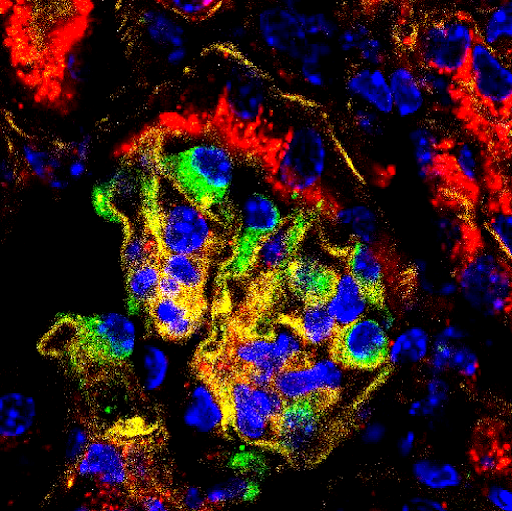Lab Overview

Judith Blaine, MD, PhD is a Professor of Medicine in the Division of Nephrology and Hypertension at the University of Colorado. The Blaine laboratory studies trafficking of proteins in epithelial cells with a particular focus on podocytes which are a key part of the glomerular filtration barrier. An intact filtration barrier is essential for normal kidney function. Podocytes do not regenerate and unchecked podocyte damage leads to progressive loss of kidney function and eventually end stage kidney disease. Immune mediated kidney diseases, which are a type of autoimmune disease for which very few targeted therapies exist, cause significant damage to podocytes. Recent studies have found that podocytes themselves can be directly affected by the immune complexes present in immune mediated kidney disease. It remains unknown how podocytes handle and respond to immune complexes. A major goal of our lab is to determine how podocytes are affected by immune complexes with the aim of creating targeted therapies to ameliorate the deleterious effects of immune complex exposure. To this end, we are focusing our efforts on a trafficking protein, the neonatal Fc receptor (FcRn), which is necessary for the correct trafficking of immune complexes in podocytes. We are also examining how microRNAs regulate the podocyte response to immune complexes and investigating how modulation of microRNA-regulated pathways can confer protection after an immune insult.
Another area of research in the lab is trafficking of transporters and proteins involved in phosphate homeostasis in the kidney proximal tubule. Phosphate metabolism is essential for multiple cellular processes including ATP production, nucleic acid synthesis and cellular signaling.
Our lab uses a combination of biochemical methods and advanced imaging techniques including live cell imaging, total internal reflection fluorescence (TIRF) microscopy, fluorescence recovery after photobleaching (FRAP) and fluorescence cross-correlation spectroscopy (FCCS) to investigate trafficking at the molecular level.




